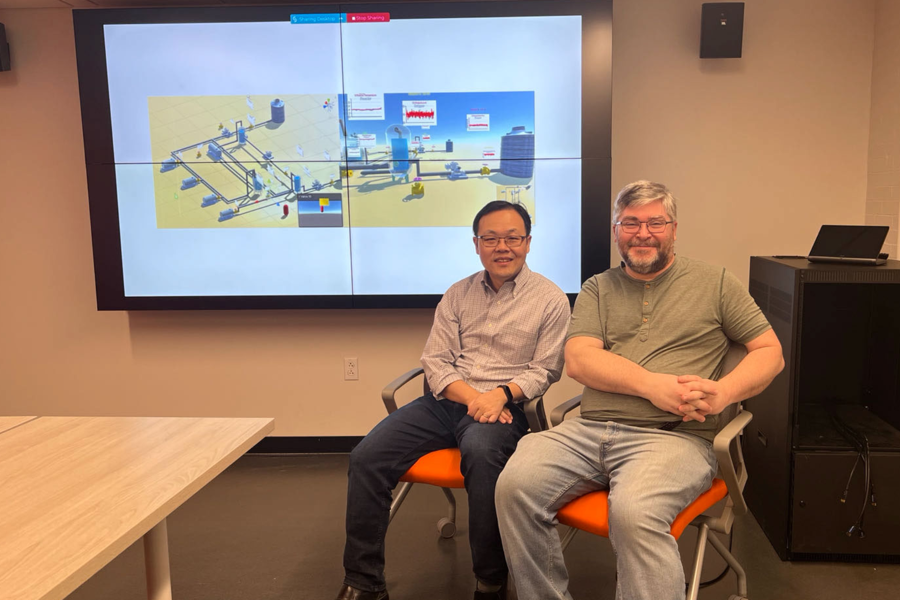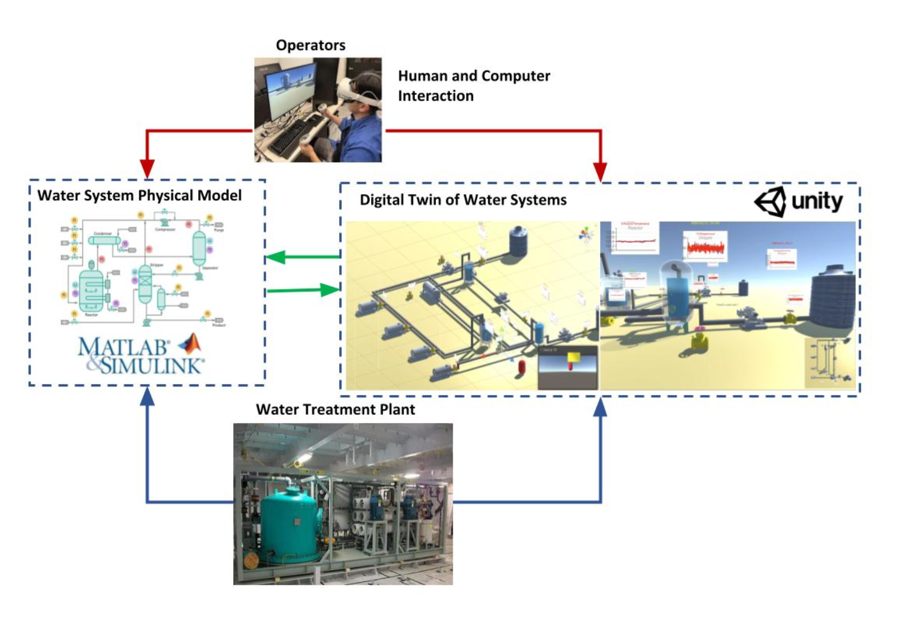
Tang and Weiss Test Infrastructure Scenarios Using Digital Twins
Years after studying together at CEE, Professor Pingbo Tang and Ethos Collaborative Principal Damon Weiss are working side by side again—looking for ways to recognize potential issues in operating and maintaining our country’s aging water treatment facilities. Their research aims to balance human nature (water engineers’ intuition and experiences) with expertise in civil engineering, IT, GIS, and 3D modeling (technology) to create a fully integrated system that addresses today’s aging infrastructure while looking to the future.
 Tang and Weiss’s studies use digital twins to test treatment facility scenarios in a 3D virtual environment. Tang explains that a twin reacts and responds just as its twin physical treatment plant does. “We envision a proactive water digital twin with an Extended Reality (virtual and augmented realities) that will automatically capture and transfer implicit strategies between operators based on human operators’ inspection, operation, and maintenance histories.”
Tang and Weiss’s studies use digital twins to test treatment facility scenarios in a 3D virtual environment. Tang explains that a twin reacts and responds just as its twin physical treatment plant does. “We envision a proactive water digital twin with an Extended Reality (virtual and augmented realities) that will automatically capture and transfer implicit strategies between operators based on human operators’ inspection, operation, and maintenance histories.”
Digital twins are especially beneficial in situations where external forces result in changes that are very specific to the particular facility. For example, water treatment facilities nationwide experience different wear and tear based on location, weather, and usage. Right now, humans are responsible for assessing these changes and recommending updates.
Tang and Weiss believe it would be much easier and more efficient to utilize both human knowledge and information supplied by a digital twin—leading to an overall improvement in the operation strategies of the water treatment plants and reduced maintenance time.
Digital twins also allow for safe scenario testing—where equipment is updated or changed in the virtual world, and results are assessed before real-world implementation. Twins may also be used to train new staff on how to react to emergencies. Weiss likens this to providing a “second brain” for the human operator—a tried-and-true back-up plan based on physics models and solid analytics. The twin can also work in reverse, looking at why something unexpected happened and explaining where things went wrong.
Tang states that for their concepts to be successful, they must consider the role of human nature and how people will react/interact with technology. He asks: What do the water treatment plant employees look at? How do they interact with the equipment? What does an experienced operator see that a less experienced individual might miss? And how can a digital twin fill the information gaps?
Another challenge Tang mentions is the water industry’s aging workforce. He hopes that adding digital twins into the mix will spur interest from young engineers. “We are working to demonstrate how new technology can be used to address ongoing problems. Today, there are not a lot of young engineers in this particular industry. This is a problem, and we hope work like ours will attract young people and help them to understand the importance of working in water treatment.”
The long-term goals of the research include integrating modern technological systems into the water treatment industry, standardizing processes, and moving toward a fully integrated system supported by future-thinking technology. “One day, we will look back and see that we have a fully integrated system,” Weiss says. “What we’re doing now is a step to get us there.”